Jajangmyeon or Korean black bean noodles is a popular Chinese-style Korean noodle dish topped with a thick, savory black bean sauce, made with chunjang (black bean paste), and loaded with vegetables and tender pork. It's an easy dish to make and one of the ultimate Korean comfort food! Enjoy it with a side of pickled radish (danmuji) or cucumber kimchi and napa cabbage kimchi.
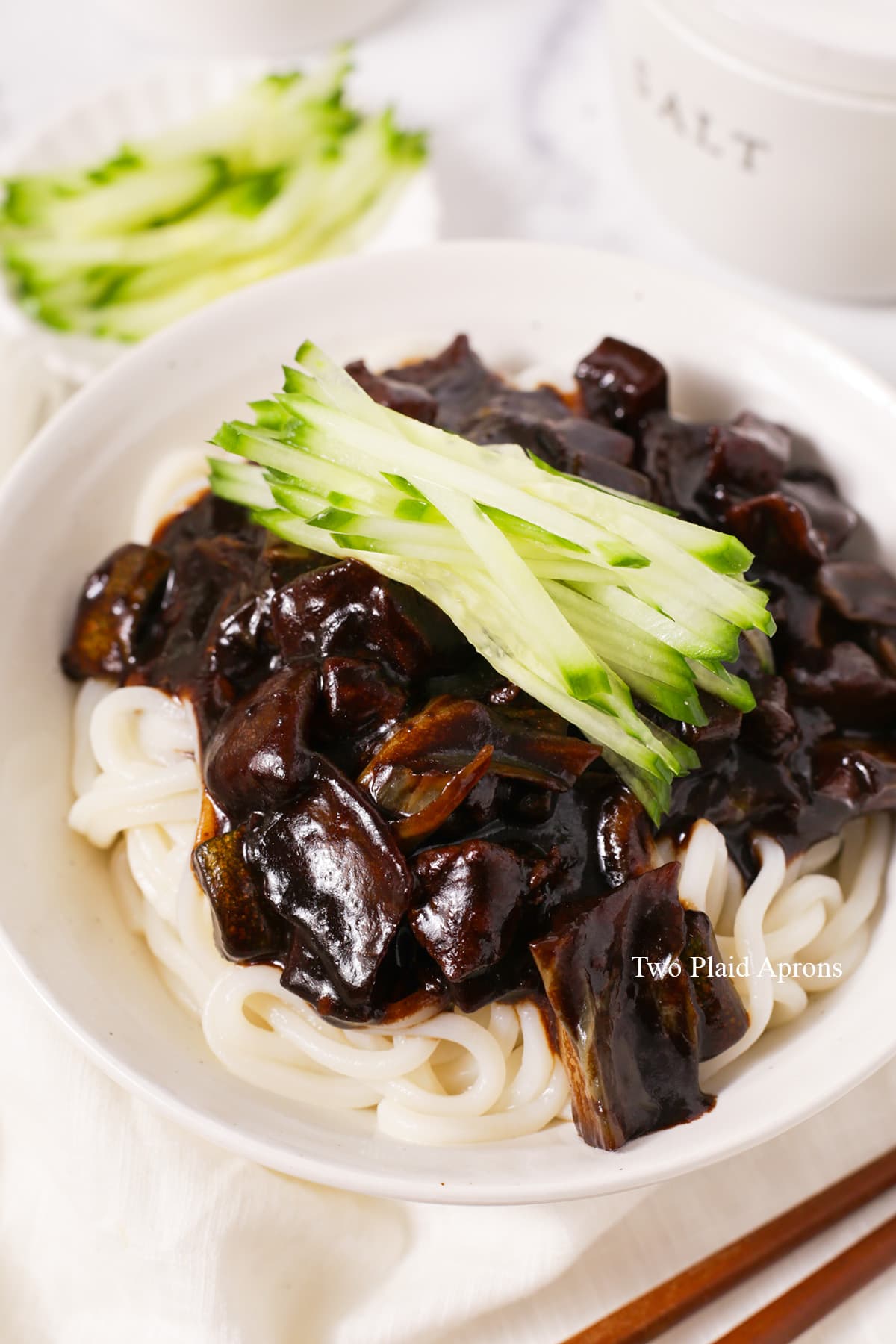
If you’ve made this recipe or any recipes from our blog, please tag us on Instagram using #twoplaidaprons! You can also tag us in your Instagram stories using @two_plaid_aprons. We would love to see your creations! It absolutely makes our day! 🥰
Jump to:
What is jajangmyeon?
Jajangmyeon (짜장면), also known as Korean black bean noodles, is a Korean noodle dish topped with a glossy, thick black bean sauce made with chunjang (black bean paste), pork, and veggies such as onions, zucchini, and cabbage.
You'll often find these black bean noodles topped with julienned cucumber, sesame seeds, hardboiled egg, or fried egg. It's also common to see pair jajangmyeon paired with tansuyuk (Korean sweet and sour pork) and jjamppong (Korea seafood noodle soup).

Ingredient Notes
Please scroll down to the recipe card for the ingredient quantities!
For the bulk of the dish:
- Korean fresh noodles - You can find these at most Korean grocery stores and Asian markets in the refrigerated aisles. We like to use the classic medium thick noodles, sometimes labeled as "udon". These fresh noodles will give your jajangmyeon that beautiful bounce and chew.
- Pork - We recommend using a fattier cut of pork, such as pork shoulder/butt, boneless country ribs, or a meaty, skinless pork belly. Traditionally, lard is used to in cooking jajangmyeon, which we are replicating by using fatty pork. It's also an essential ingredient to make the best tasting jajangmyeon sauce.
- Yellow onion - This adds natural sweetness, flavor, and texture to the jajangmyeon sauce.
- Korean zucchini and green cabbage - These two are classic veggies using in making the black bean sauce. Both will add natural sweetness, bulk up the sauce, and of course add fiber to our diet. If you can't find Korean zucchini, you can use regular zucchini or even yellow squash.
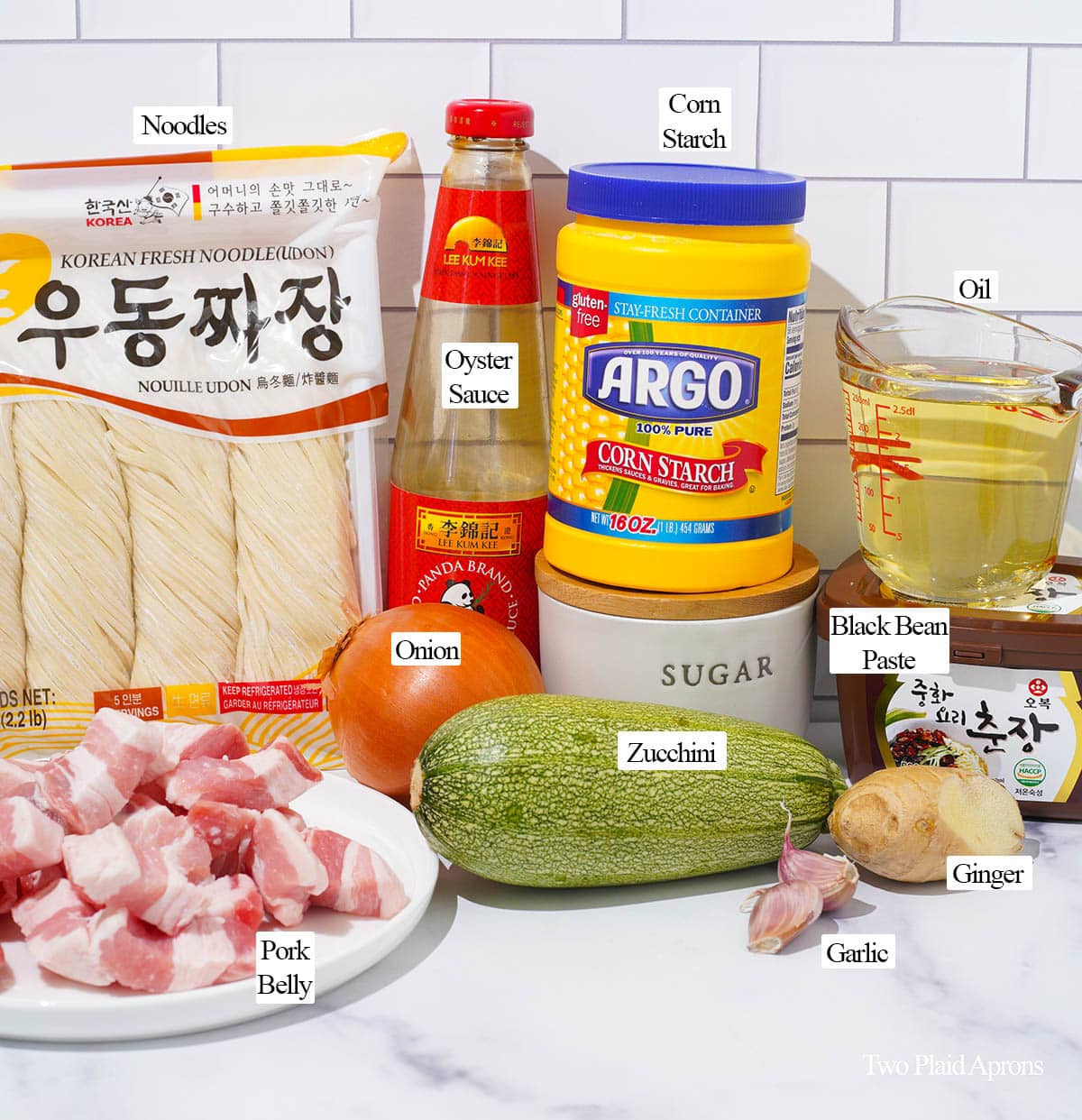
For the jajangmyeon sauce:
- Korean black bean paste (chunjang) - This is also known as fermented black bean paste, and it's the main ingredient that gives jajangmyeon sauce its flavor. It is usually made with soybean, flour, caramel color, and sometimes seasonings and can be found at Korean markets and most Asian markets, next to the gochujang and doenjang.
- Garlic and ginger - These two aromatics not only makes the black bean sauce more aromatic and flavorful, they also help to get rid of the unwanted pork smell and taste.
- Oyster sauce and sugar - Both of these help round out the flavor of the black bean sauce and strengthen the flavor. The oyster sauce also adds an additional punch of umami.
- Water - For stewing and thinning out the black bean sauce. If you want the sauce to be more flavorful and more nutritious, you can use vegetable broth or chicken stock instead.
- Oil - For frying the black bean paste. Any neutral oil, such as avocado, grapeseed, or canola oil will do.
- Cornstarch slurry - For thickening the jajangmyeon sauce. Just mix equal parts of cornstarch with cold water. Make sure to stir it before adding to the sauce.
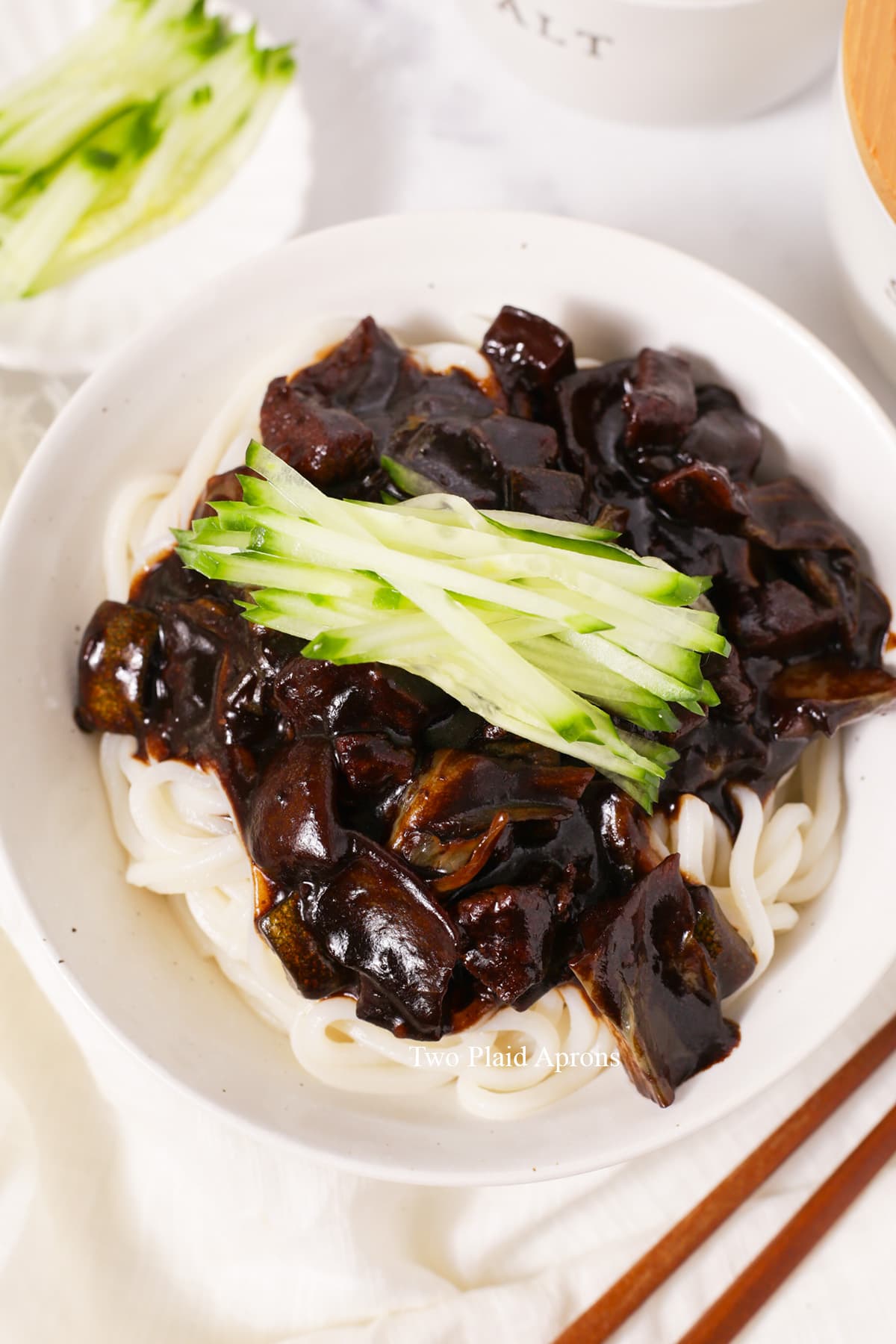
The best noodles for making jajangmyeon
Classic jajangmyeon served at Korean restaurants use Korean fresh noodles. These noodles are also what we recommend because they're bouncy with a slight chew, which is exactly what you need to replicate restaurant quality Korean black bean noodles. We like to use the "udon" size Korean fresh noodles, but other variations such as hand-cut noodles (kalguksu) is great too.
You can find these Korean fresh noodles at Korean markets and most Asian market in the refrigerated aisles.
If you can't find Korean fresh noodles, udon noodles and spaghetti can be used as a substitute. Also, if you enjoy instant ramen and instant jajangmyeon, instant ramen noodles make a great substitute as well. It's like giving instant jajangmyeon an upgrade!
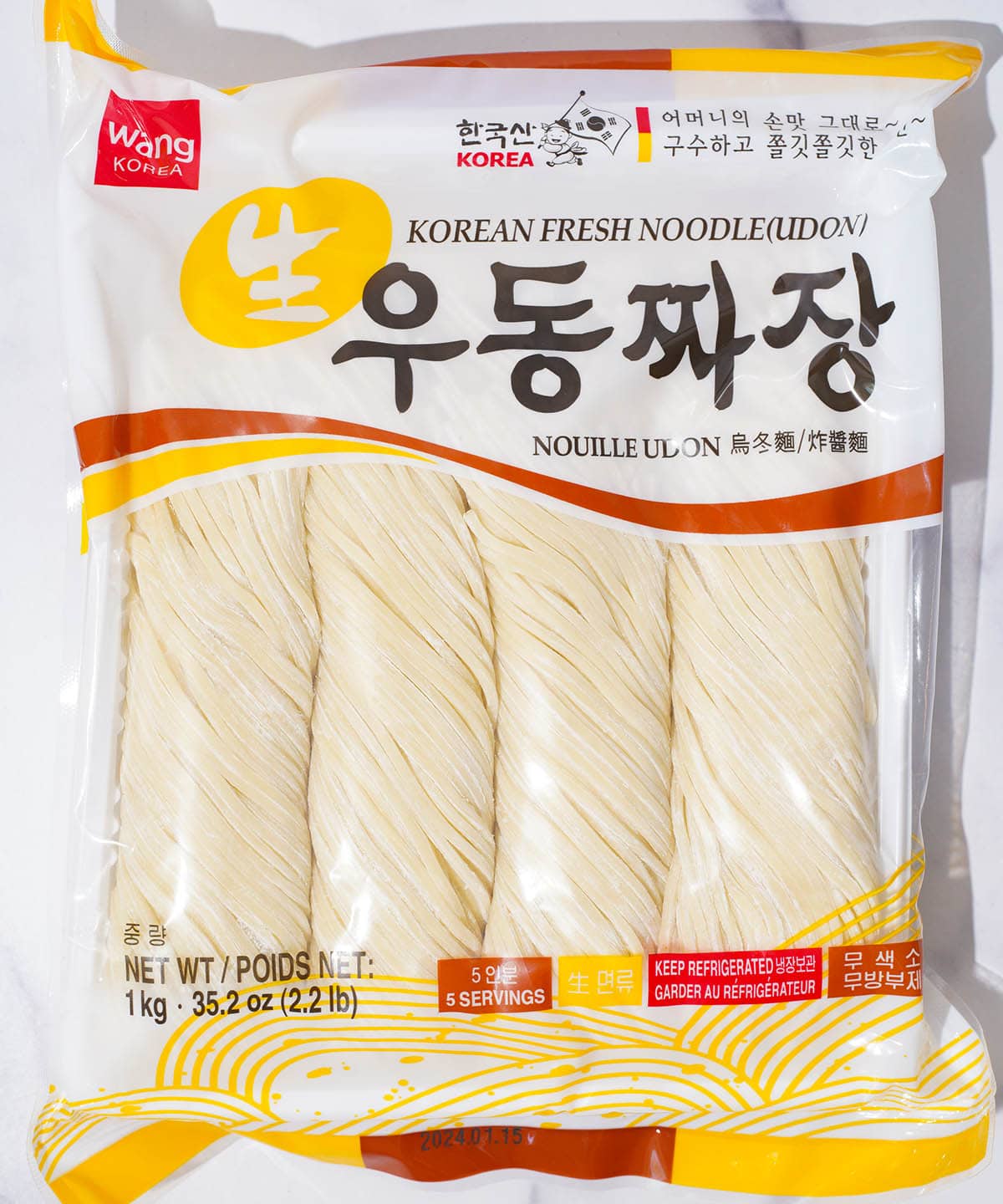
How to make jajangmyeon
Make the jajangmyeon sauce:
1. Fry the black bean paste. In a large nonstick saucepan or pot, add the oil and heat over medium heat. Add the Korean black bean paste and stir fry for about 2 to 3 minutes or until it's fragrant. Make sure to stir constantly to prevent burning. Transfer the stir fried black bean paste to a heatproof bowl.
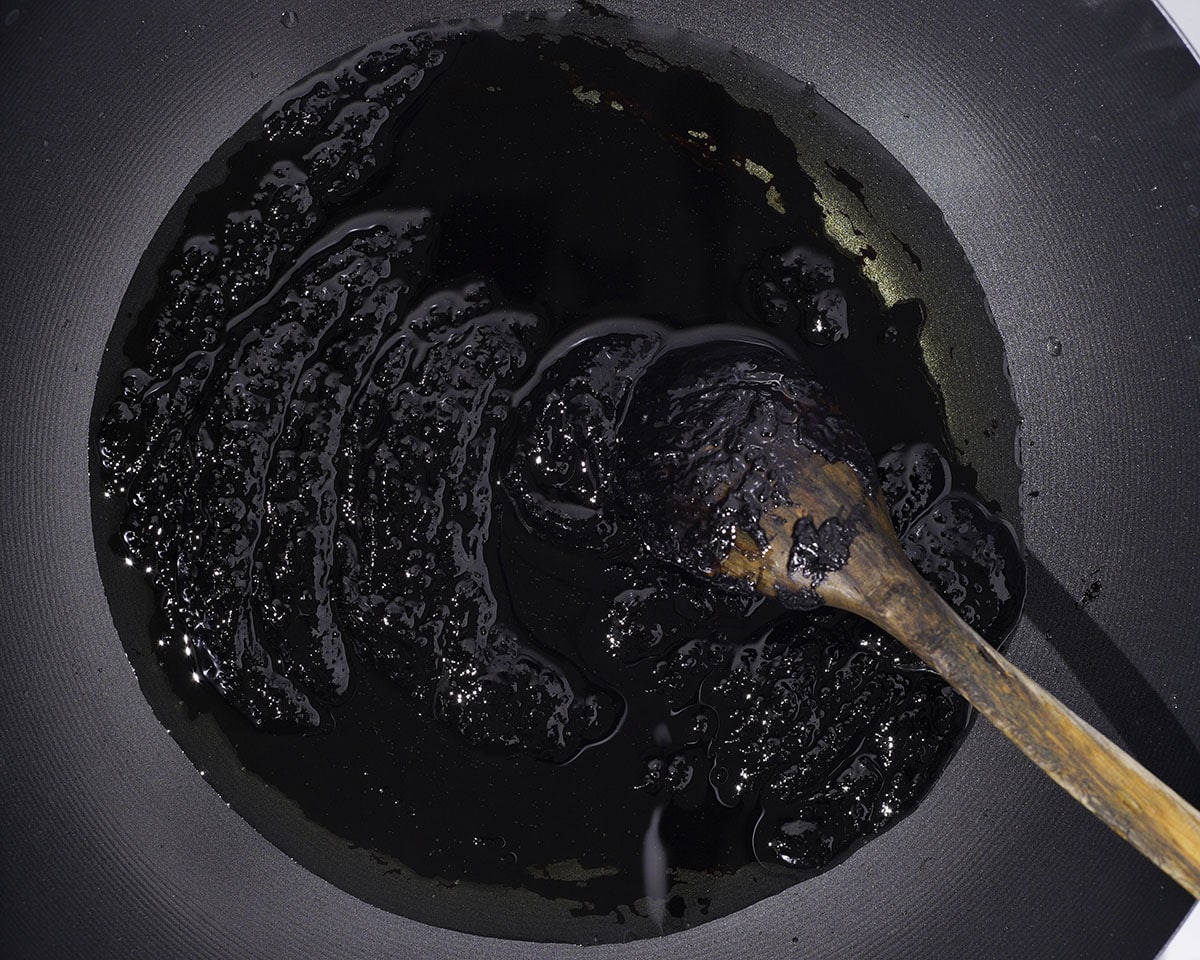
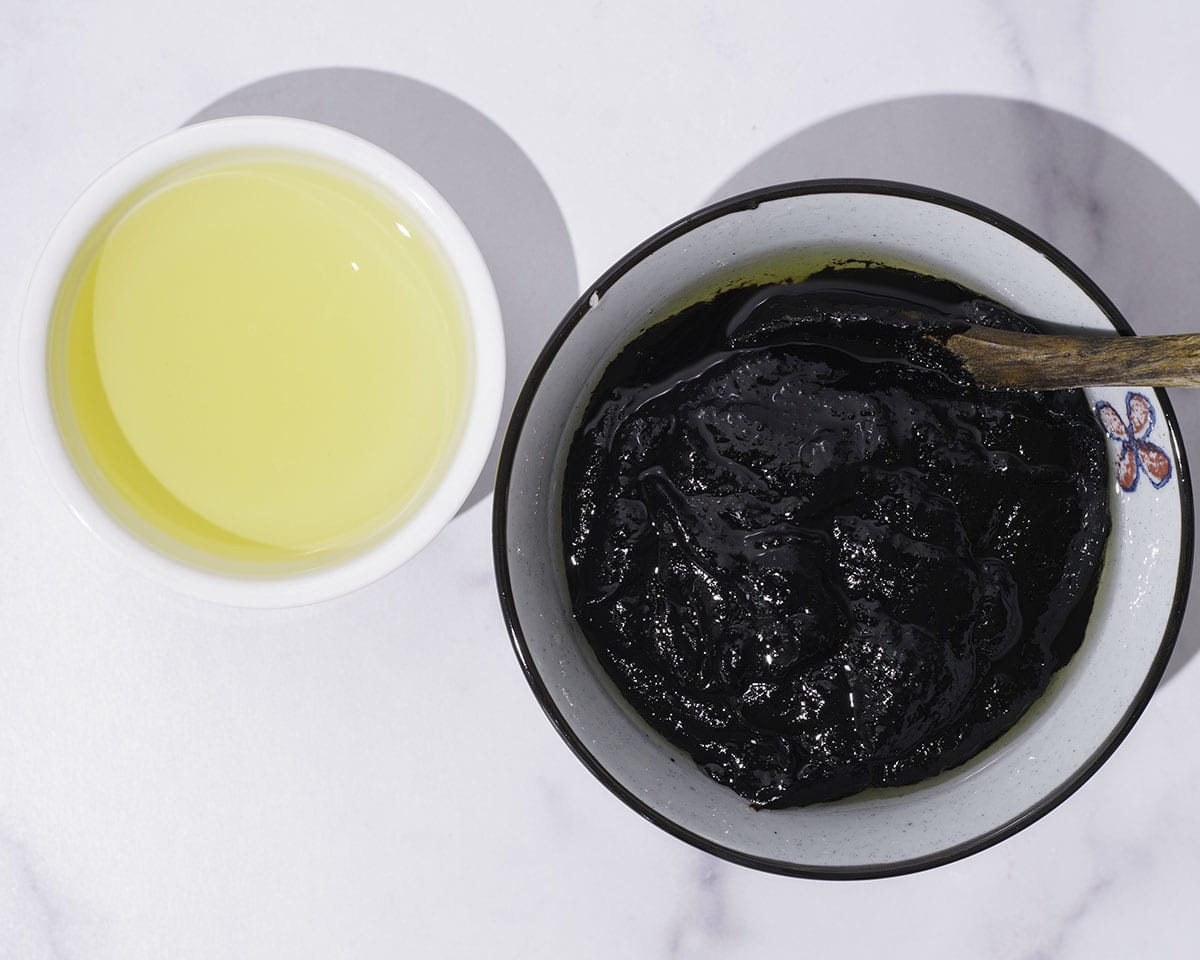
2. Stir fry pork. Into the same saucepan, over medium high heat, add enough oil to lightly coat the bottom of the pan. Use a clean pan if the paste gets stuck. Add the pork and stir fry until lightly browned on all sides If using pork belly, stir fry until the fat on the pork belly is mostly rendered.
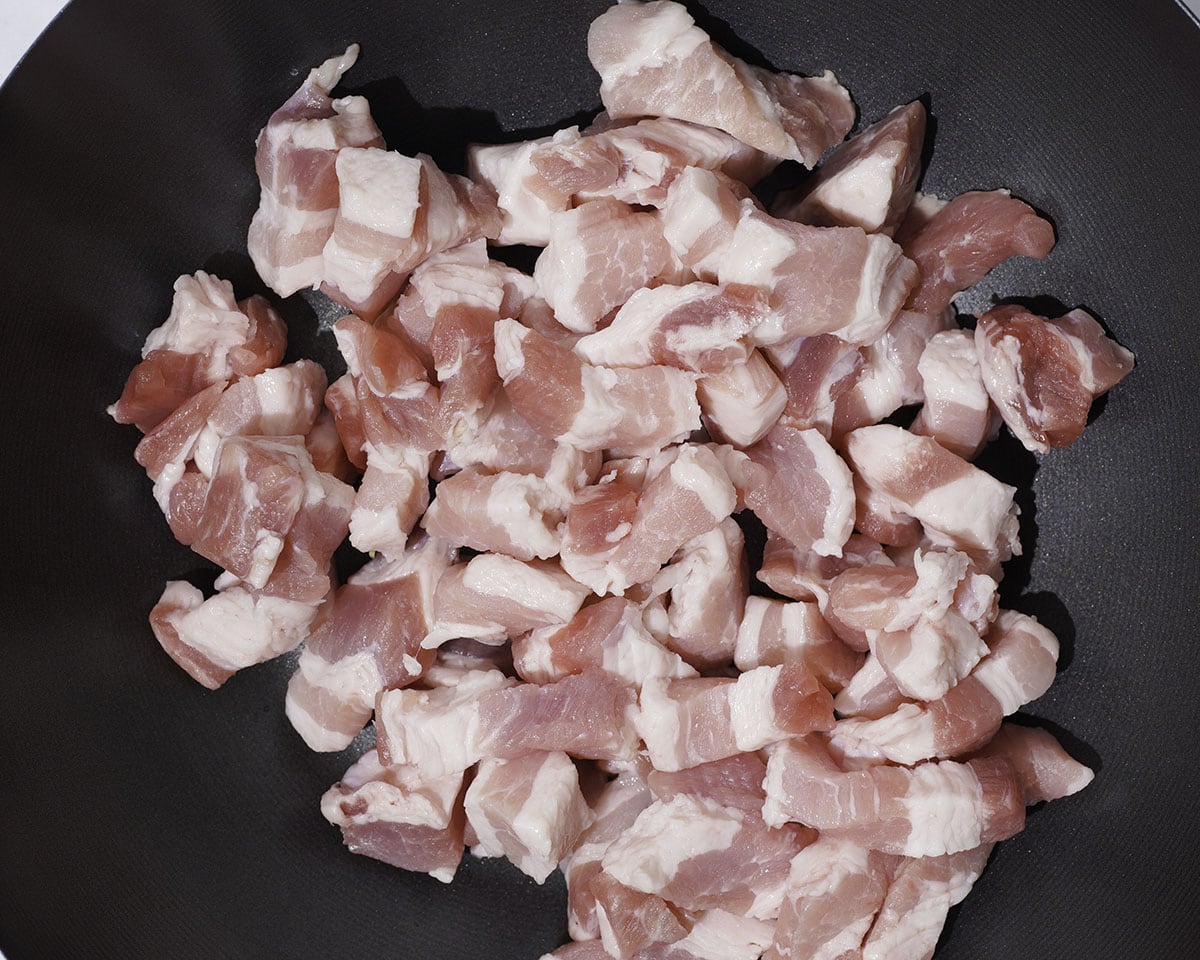
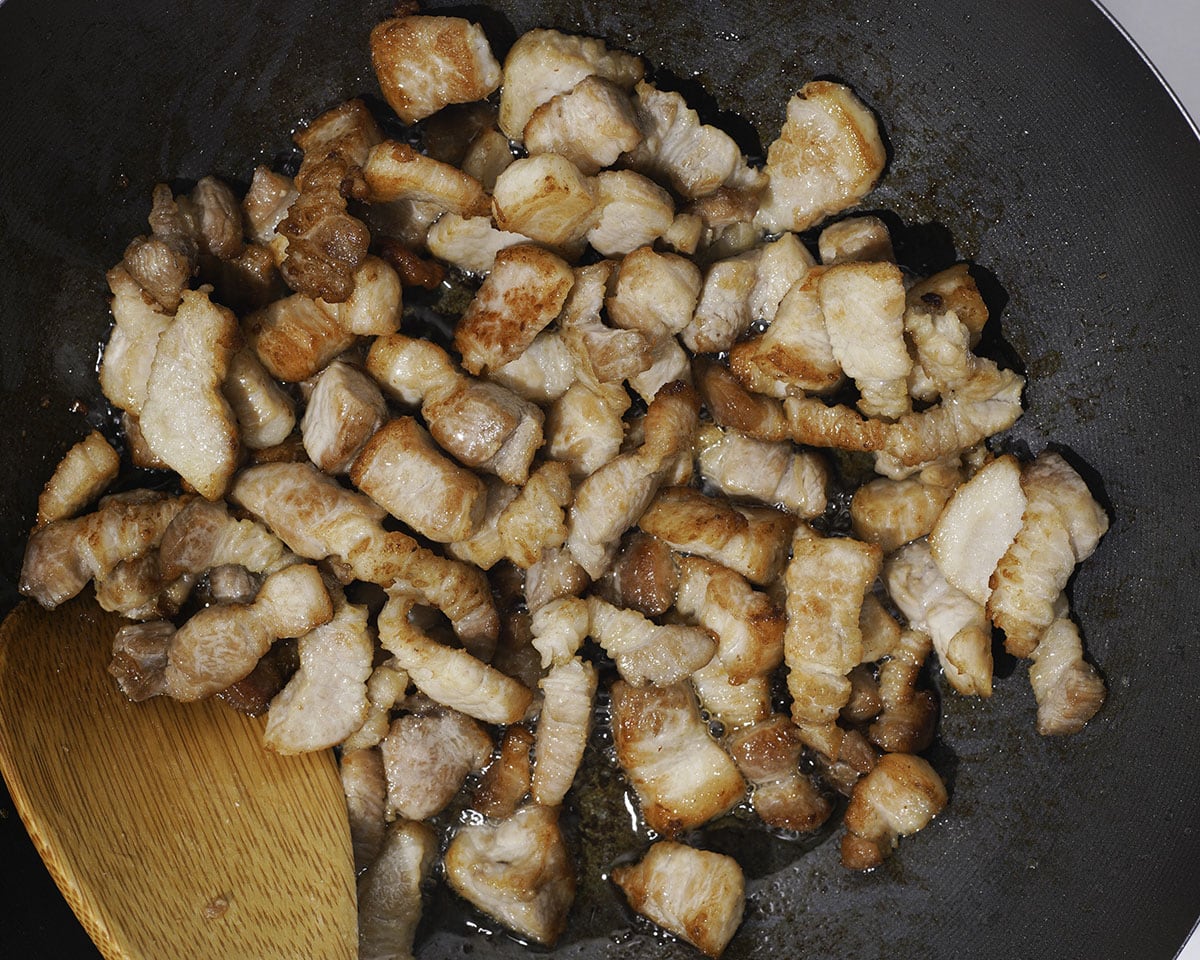
🌟 Pro tip: To get max flavor, use the excess oil from the stir fried black bean paste to stir fry the pork.
3. Sauté aromatics. Once the pork browned, reduce the heat to medium and add the garlic and ginger. Sauté for 10 to 20 seconds or until fragrant.
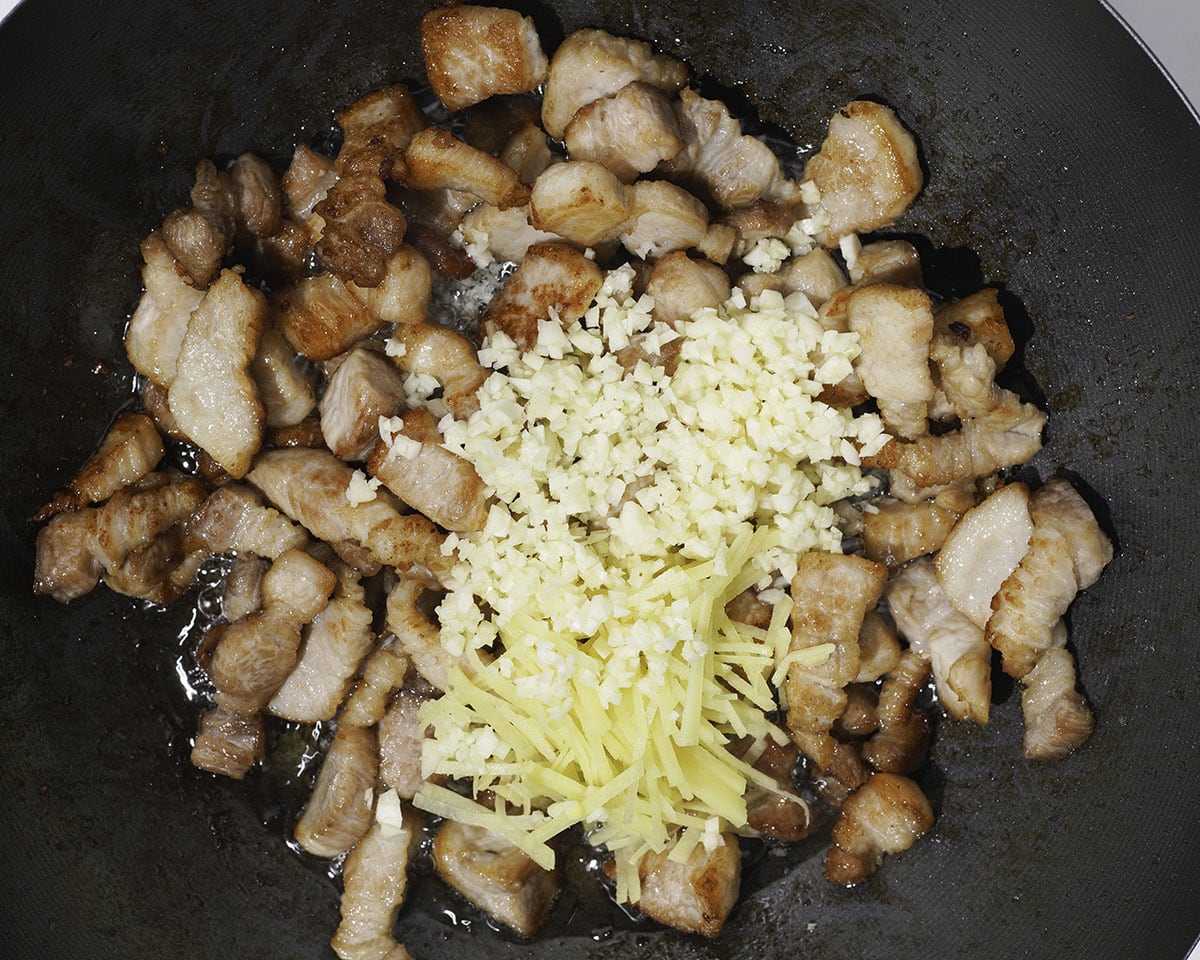
4. Add vegetables. To the saucepan, add all the onion, zucchini, and cabbage. Saute everything for a few minutes until the cabbage starts to wilt
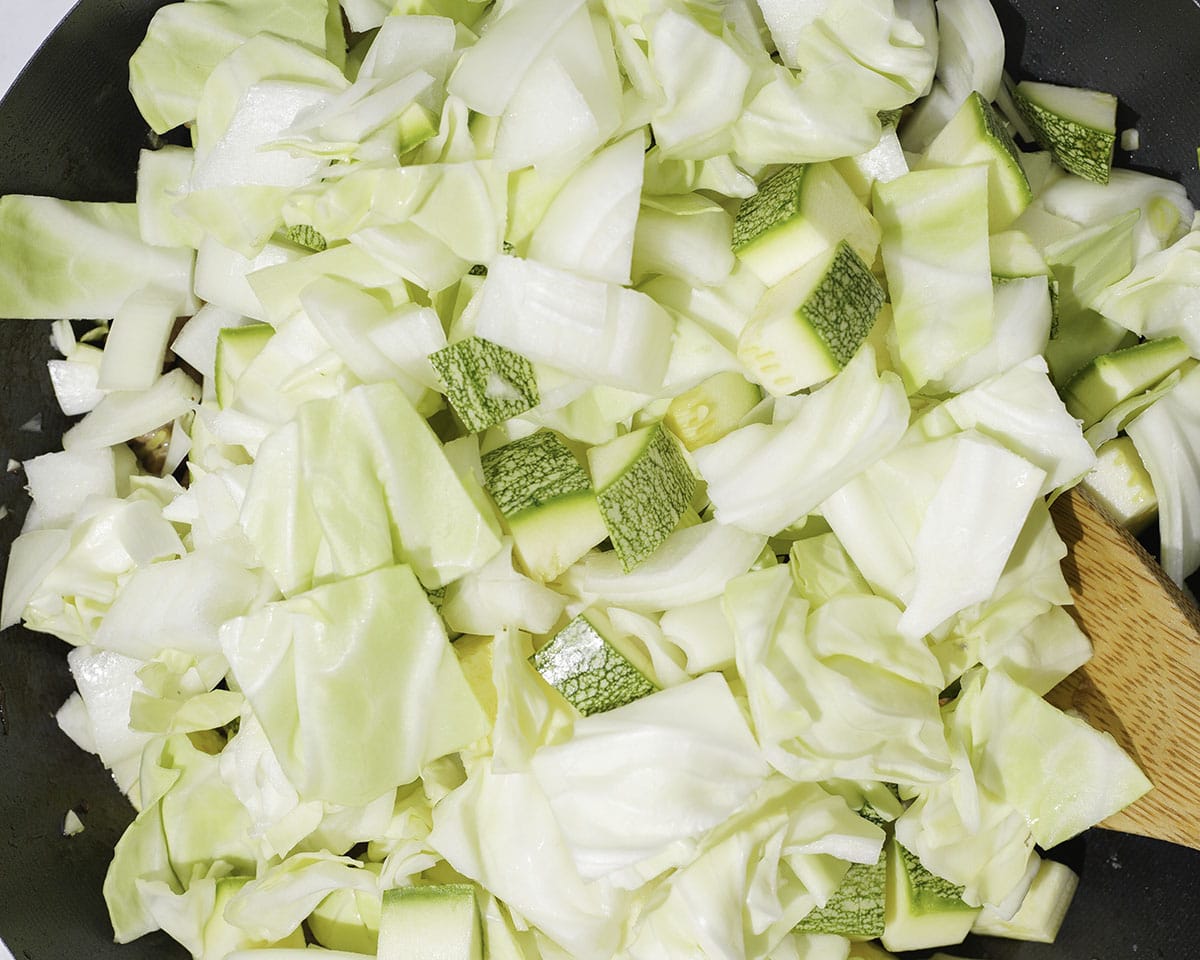

5. Add the prepared black bean paste. Once the vegetables starts to wilt, add the stir fried black bean paste. Sauté and mix until everything is well coated.
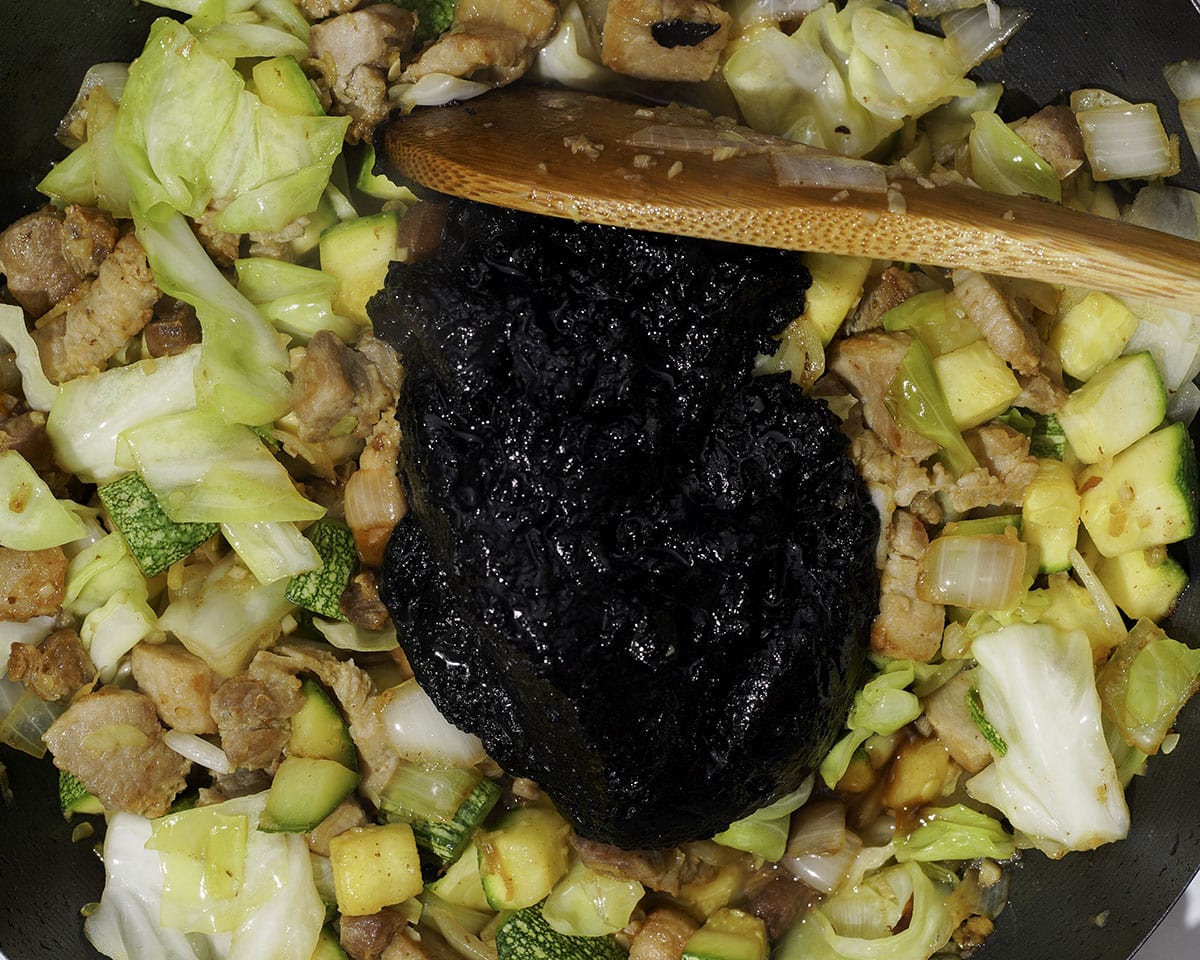
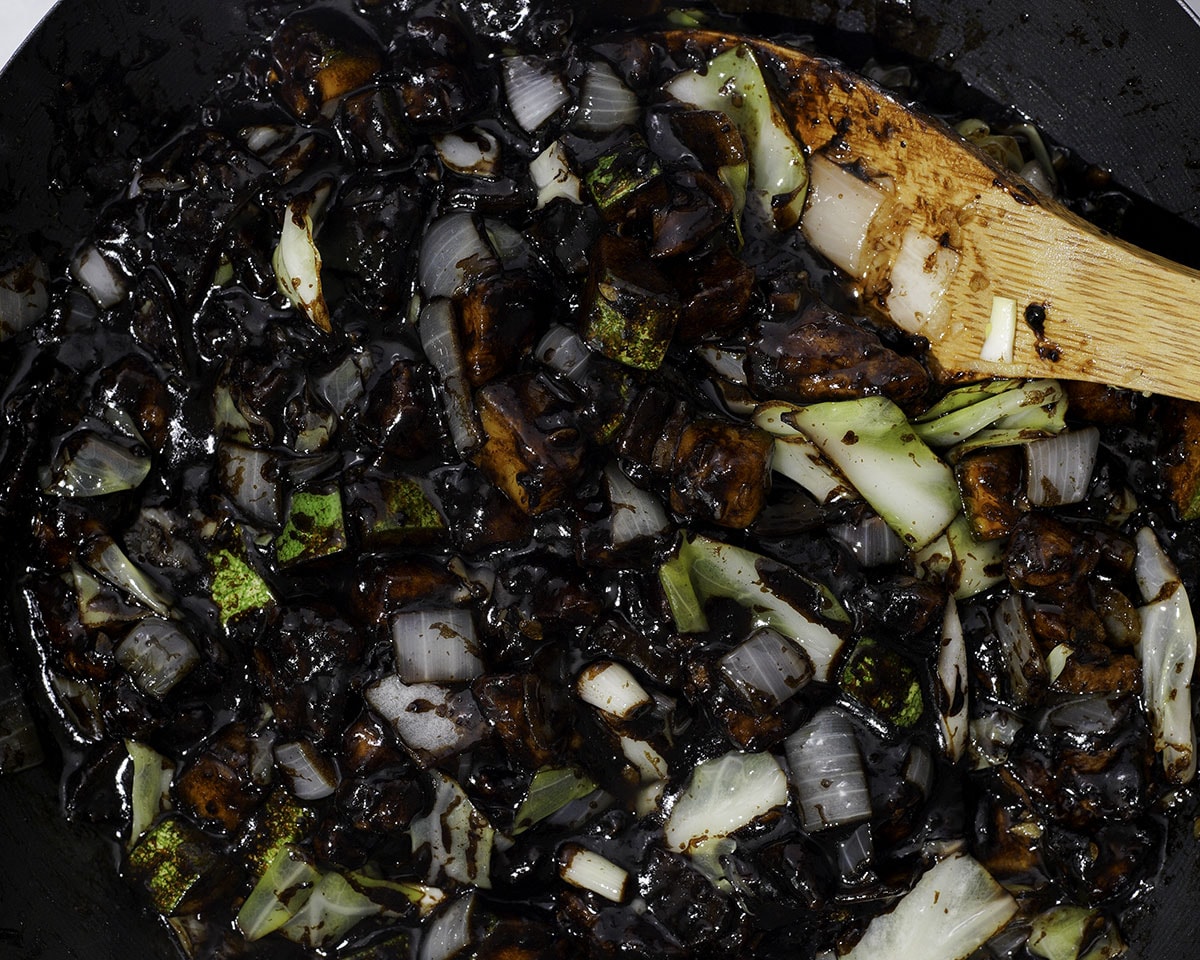
6. Season and simmer. To the saucepan, add water, oyster sauce, and sugar and bring everything to a boil. Then reduce the heat allow the sauce to simmer for 10 to 15 minutes or until the zucchini and pork is tender and the sauce is at your desired saltiness.
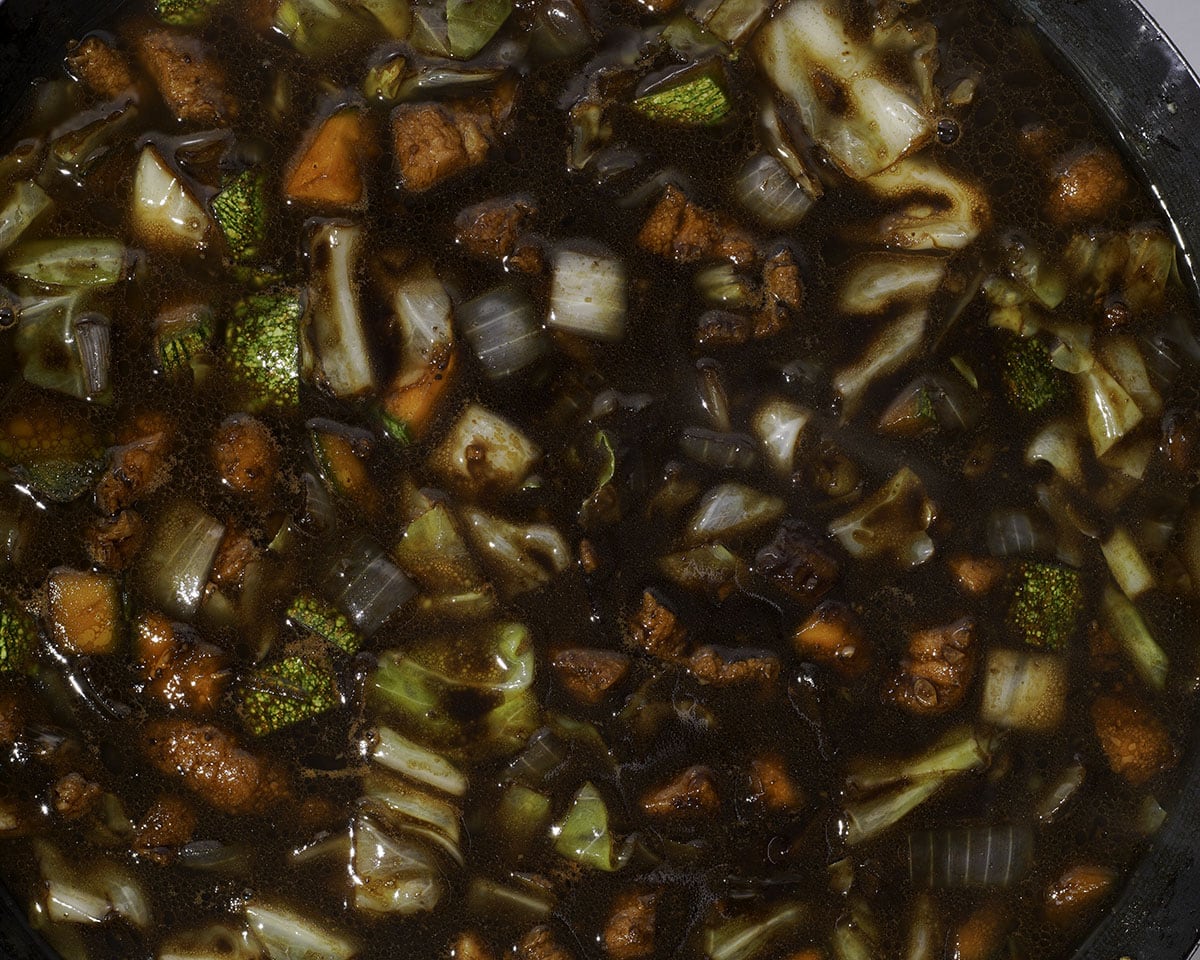
📝 Note: The saltiness of your jajangmyeon sauce can depend on the brand of noodles you're using. Some noodles are saltier than others, so adjust how much sauce to reduce as needed.
Serve:
7. Cook the noodles. While the jajangmyeon sauce is simmering, bring a pot of water to a boil and cook the noodles according to the package instructions. Once cooked, drain the noodles well. If you're using Korean fresh noodles, rinse with water to rinse off excess starch and drain well after rinsing. Portion the noodles into serving plates/bowls.
📝 Note: Korean fresh noodles are usually dusted with cornstarch. It'll thicken up the cooking water and result in boil-overs. So make sure to use a large enough pot!
8. Thicken the sauce. Once the sauce is done simmering, mix the cornstarch with equal amounts of water to make a cornstarch slurry. Mix until well combined. While stirring the black bean sauce, slowly drizzle in the cornstarch slurry.
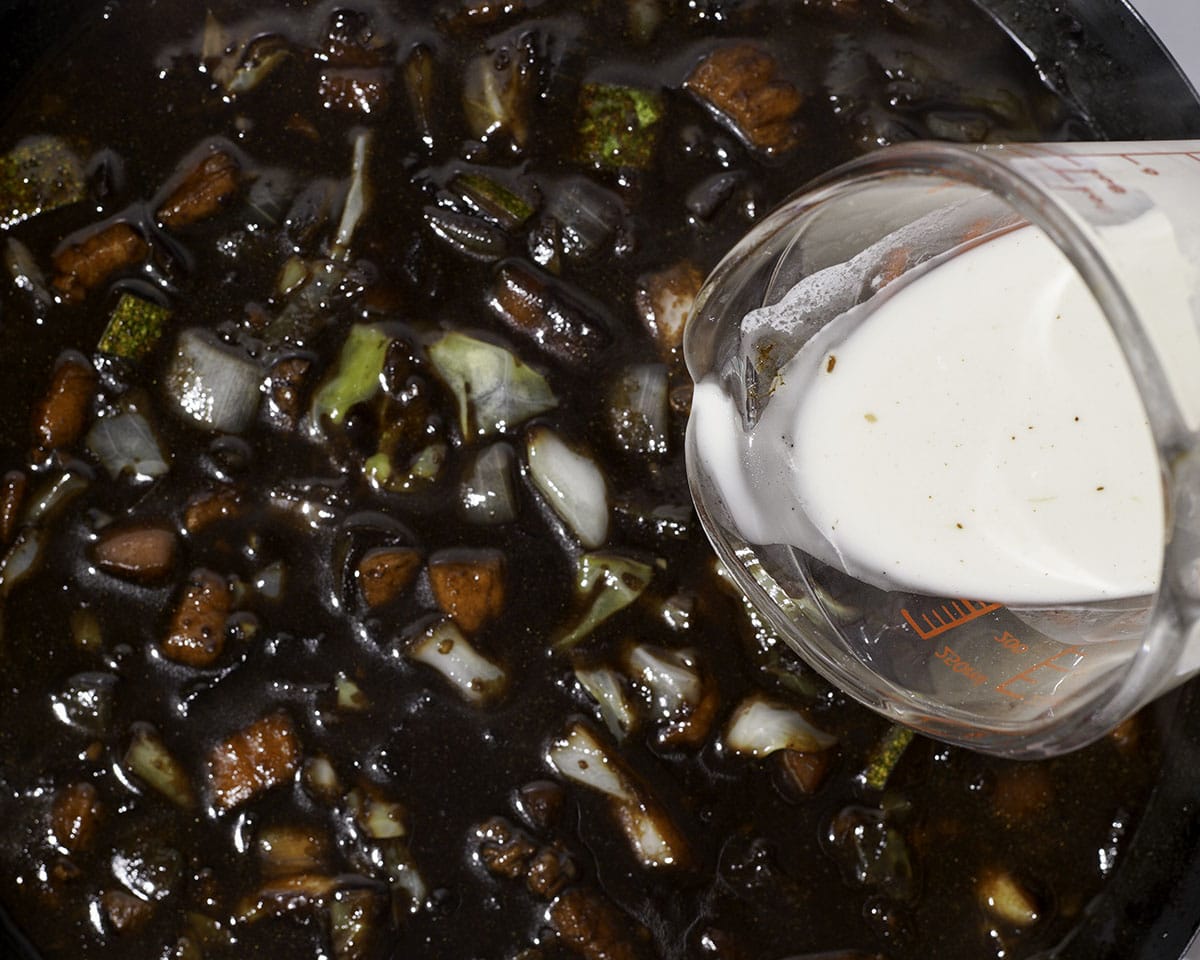
Allow the jajangmyeon sauce simmer for a few seconds, stirring frequently, until thickened and looks super glossy.
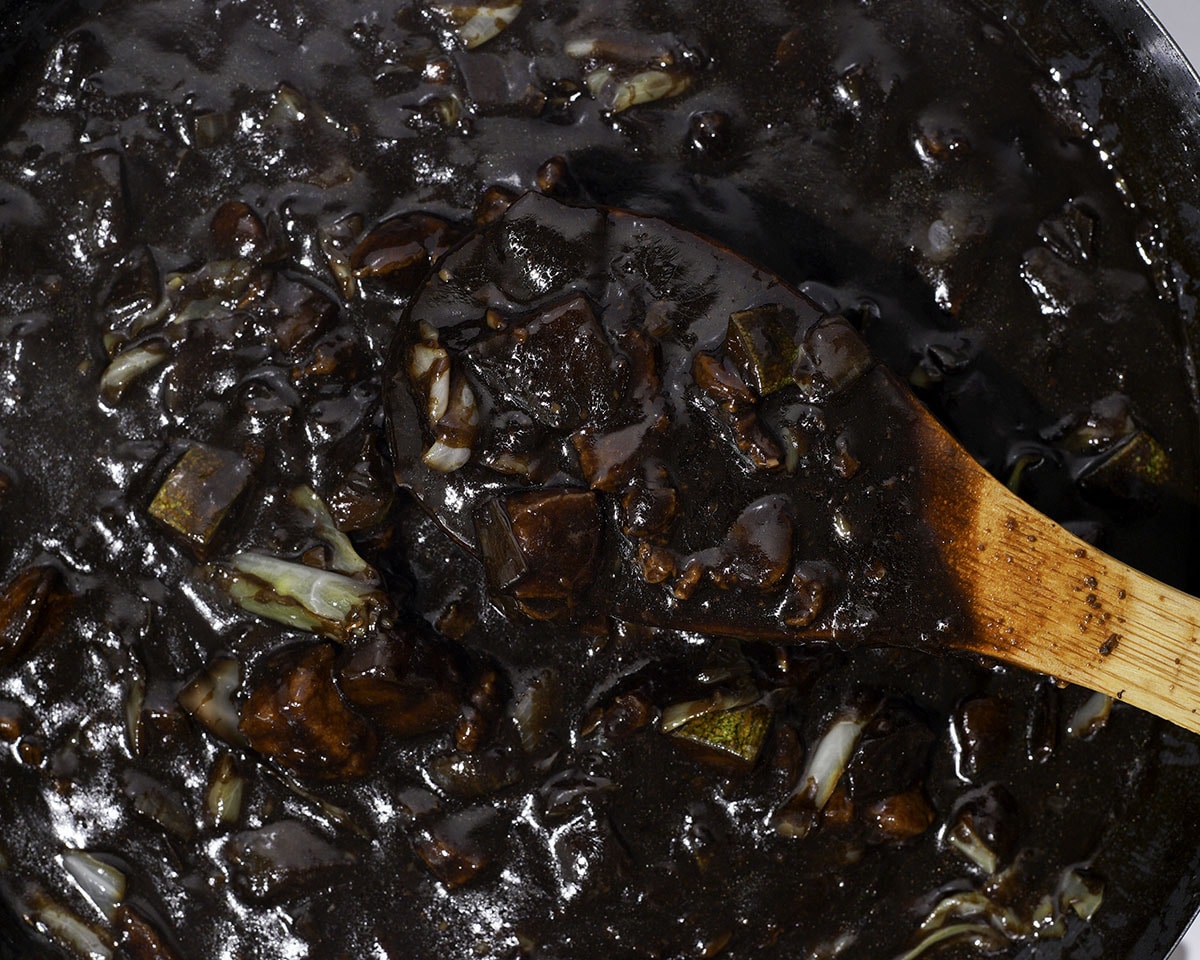
📝 Note: The amount of cornstarch slurry used for the sauce is based on 10 to 15 minutes of moderate simmering. If you reduce the sauce more or less, you may need to adjust the amount of slurry needed, depending on how thick you prefer the sauce to be.
9. Serve. Ladle a generous amount of the pipping hot jajangmyeon sauce over the prepared noodles and garnish with julienned cucumber. Serve immediately. To enjoy, mix together the noodles and sauce until well combined.
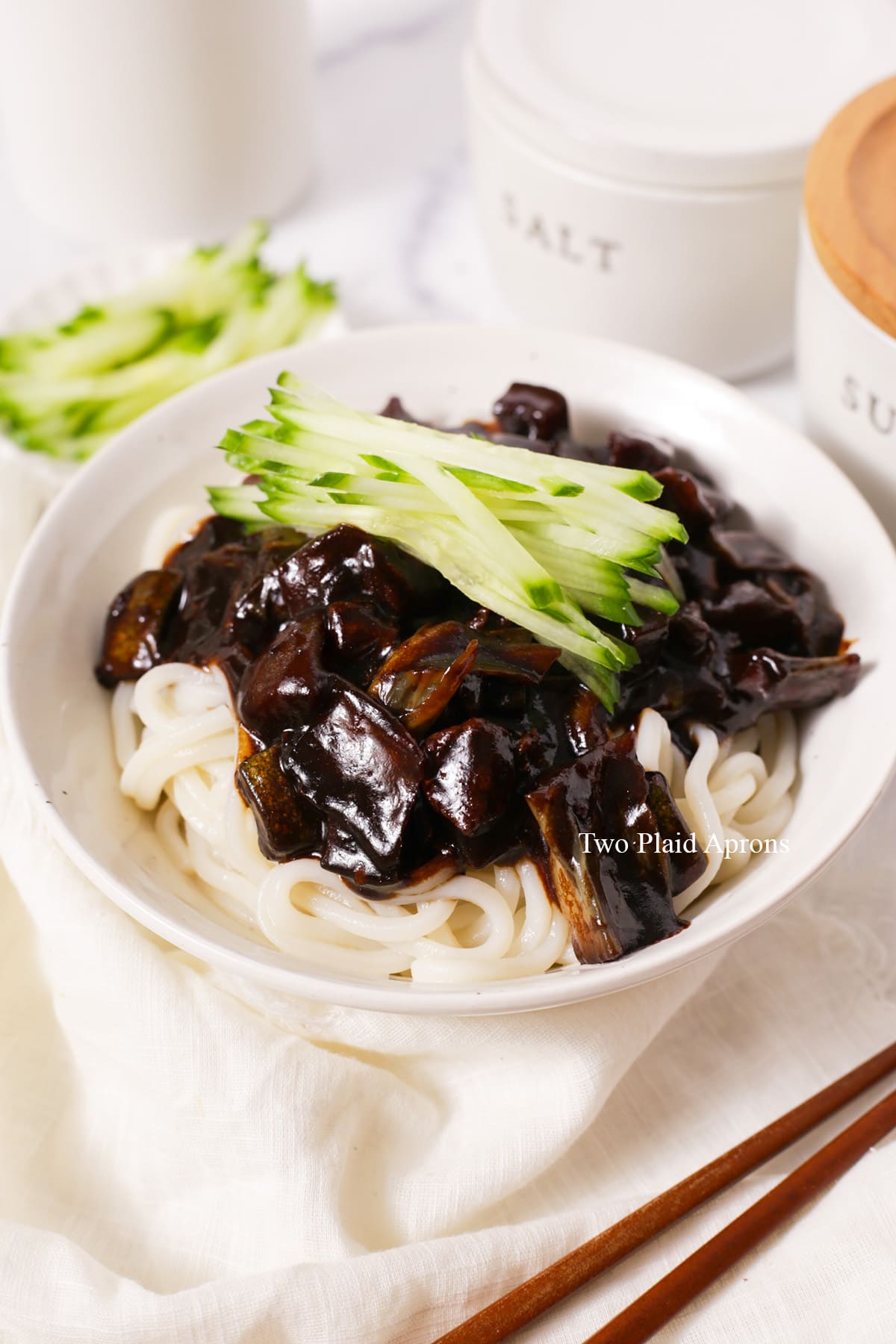
How to enjoy jajangmyeon
Jajangmyeon is one of the ultimate comfort dishes that can be enjoyed anytime. Simply mix the sauce and noodles well and you are on the way to a bowl of comforting delicioiusness! You'll also notice that this noodle dish is often garnished with julienned cucumbers, sesame seeds, sliced green onions, hardboiled egg, or fried eggs.
Also, like any good Korean meal, a variety of banchan (side dishes) can be served with jajangmyeon, the most popular ones are danmuji (yellow pickled radish), napa cabbage kimchi, and slices of raw onion with some black bean paste.
As for meal pairings, jajangmyeon is commonly eaten with tangsuyuk (Korean sweet and sour pork) and jjamppong (Korean seafood noodle soup). This trifecta is often enjoyed when one move into a new home.
Lastly, if you have leftover jajangmyeon sauce, but no noodles, you can eat it over rice instead. This is called jajangbap and a fried egg can be added on top for maximum yumminess!
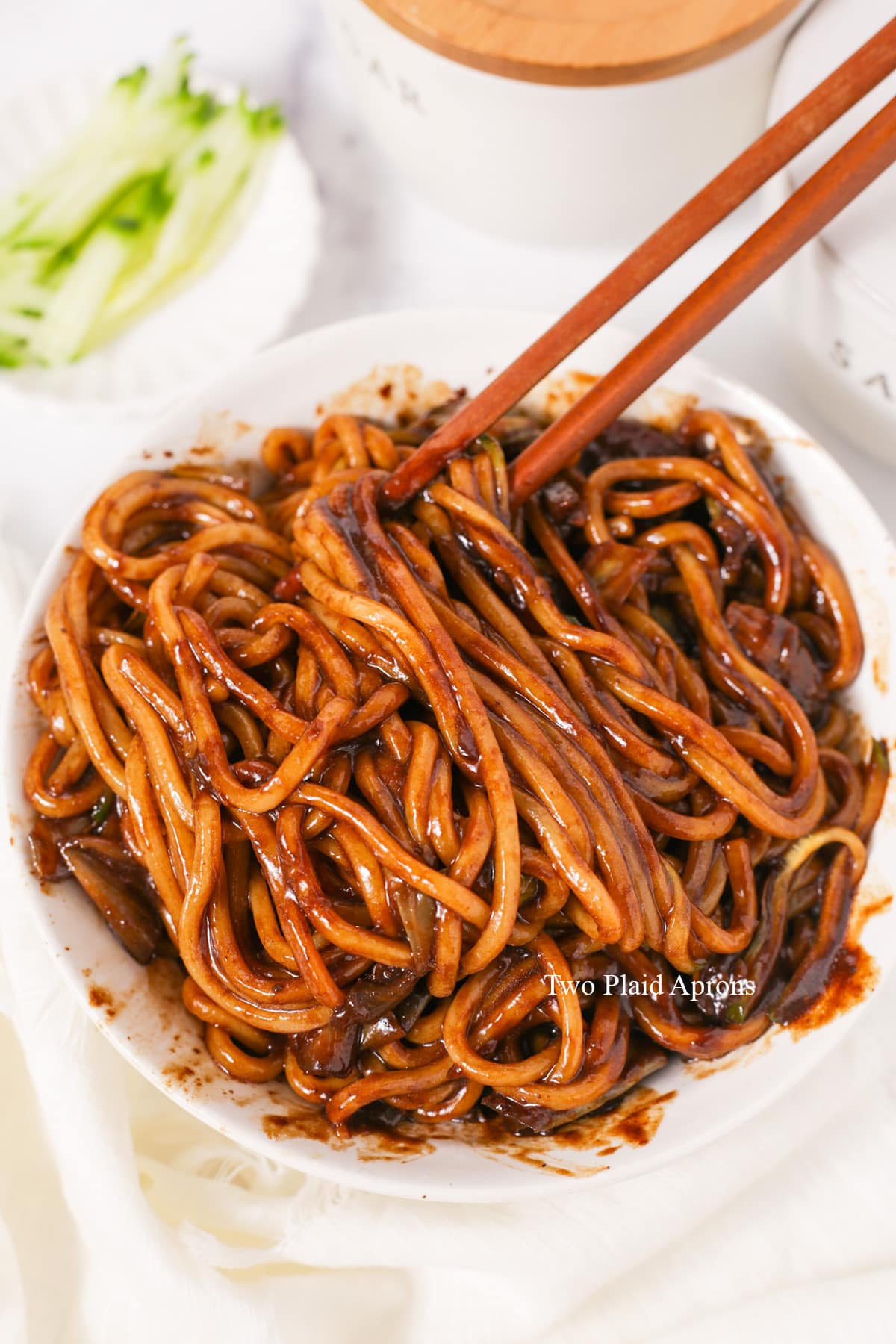
Recipe Tips
- Don't skip the bean paste stir frying step. Stir frying the black bean paste makes the past more fragrance. It also get rid of the slightly bitter flavor in the bean paste. Just make sure to not burn it!
- If using pork belly, make sure to render it. This is especially important if your pork belly is on the fattier side. This way the pork will have better texture and the black bean sauce will be more flavorful.
- Adjust the thickness and saltiness of the sauce to your preference. How much to reduce the jajangmyeon sauce is really up to your personal preference and how salty you want the sauce. We recommend that you first reduce the sauce to your preferred saltiness. Then, thicken with the cornstarch slurry to your preferred thickness.
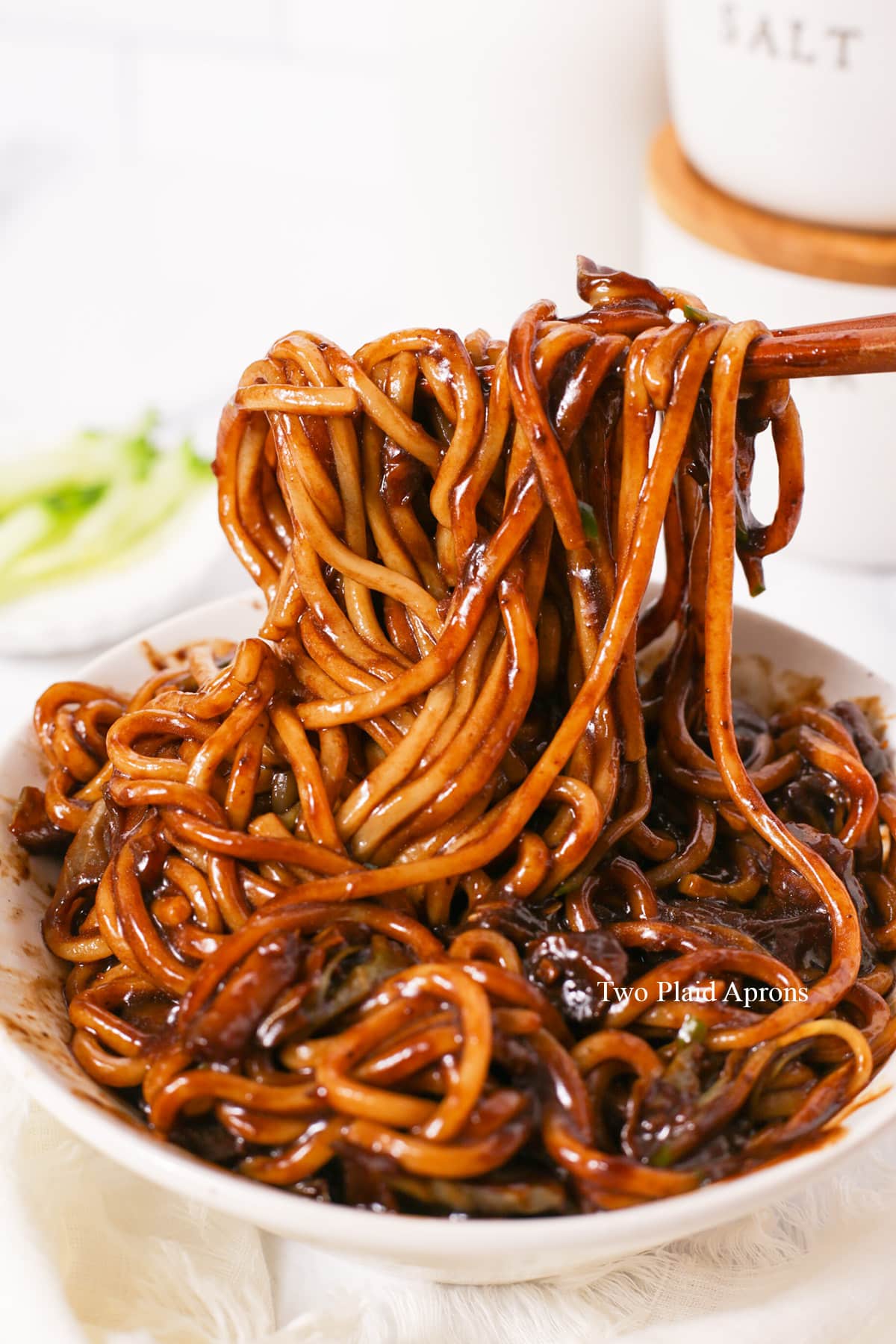
Storage
Leftover jajangmyeon sauce, can be stored in the fridge for up to 5 days or frozen for up to 1 month. Make sure to let the sauce cool completely before transfering to an airtight container and storing.
As for the noodles, it is best to only cook as much as you can eat in one sitting. If you have leftover already mixed jajangmyeon, let it cool completely before storing. It'll be good for up to 3 days.
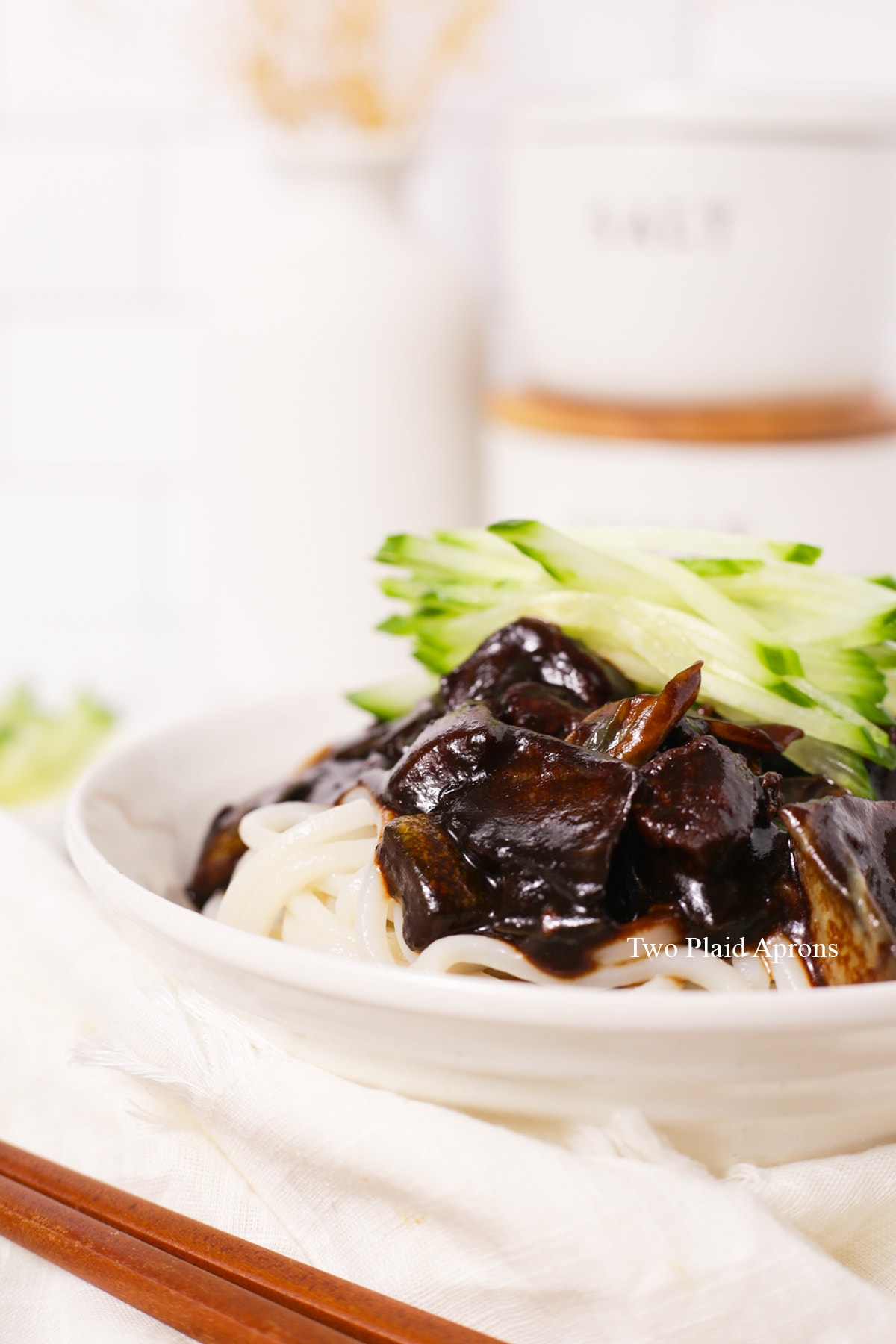
Reheating
Like many sauces, stews, and soups, jajangmyeon sauce also taste even better the second day.
Microwave method: Heat in a loosely covered microwave-safe container until warmed through. Stir mid-way through. Do the same with leftover, already mixed jajangmyeon.
Stovetop method: Place the leftover sauce in a sauce pan and heat over medium heat until hot. Sometimes the black bean sauce can become thin as it sits in the fridge. In those cases, stir in some cornstarch slurry (starting with 1TBSP) and simmer on medium heat until thickened.
For frozen sauces should be defrosted overnight in the fridge before reheating.

FAQ
Jajangmyeon is generally accepted to have derived from Chinese zha jiang mian, so it's considered a Chinese-Korean fusion dish, although the ingredients and flavors are different.
The main similarity between the two noodle dishes is that both sauces are made by stir frying some fermented bean paste.
In term of differences, jajangmyeon is made with chunjang (Korean fermented black bean paste), while zha jiang mian can vary depending on the the province. One of the most popular style, the Beijing-style zha jiang mian, is made with a mix of sweet bean paste and yellow bean paste.
The overall flavor of jajangmyeon is dependent on the brand of chunjang (Korean black bean paste) you use. Generally, jajangmyeon is savory and very mildly sweet due to the onions and vegetables added.
No, jajangmyeon should not be bitter. It should be savory with a mild sweetness. If the jajangmyeon is bitter, either the black bean paste (chunjang) was burnt when stir frying or it wasn't stir fried long enough.
📖 Recipe
Jajangmyeon (Korean Black Bean Noodles)
Ingredients
For the jajangmyeon sauce:
- ⅔ cup Korean black bean paste (chunjang)
- ¼ cup oil any neutral oil will do
- 1 pound boneless pork shoulder small diced (pork butt and pork belly is okay too)
- 3 tablespoons garlic minced (3TBSP is about 5-6 cloves)
- 1 tablespoon ginger peeled and minced (1TBSP is about ½ inch)
- 1 medium yellow onion small diced
- 10 ounces green cabbage roughly chopped (about 2 cups)
- 1 Korean zucchini small diced (or regular zucchini)
- 2 cups water
- 3 tablespoons oyster sauce
- 2 tablespoons granulated sugar
- 3 tablespoons cornstarch mix every 3TBSP cornstarch with 3TBSP water to make cornstarch slurry
The rest of the dish:
- 4 bundles Korean fresh noodle
- English cucumber julienned (optional for garnish)
- Kimchi (optional side)
- Danmuji pickled yellow radish (optional side)
Instructions
- Stir fry the black bean paste (chunjang):In a small nonstick saucepan over medium heat, add the oil. Once the oil is hot, add the black bean paste and stir fry for about 2 minutes or until it's fragrant. Make sure to stir constantly. Remove the black bean paste from heat and set aside until needed.
- Make the jajangmyeon sauce:To a large saucepan or pot, drain the excess oil from the fried black bean paste. If needed, add a little more oil so that the bottom of the pan is lightly coated. Heat the pot over medium high heat and once the oil is hot, add the pork and stir fry until the pork is lightly browned on all sides and no longer pink. If using pork belly, make sure to render the fat well.
- Reduce the heat to medium and add the garlic and ginger. Stir fry for about 10 to 20 seconds until fragrant. Add the onion, zucchini, and cabbage and stir fry for a few minutes, until the cabbage starts to wilt.
- Then, add the stir fried black bean paste, to the pan and stir fry and mix until everything is well coated with the bean paste.
- To the pan, add the water, oyster sauce, and sugar and bring it to a boil. Then, reduce the heat to keep the sauce at a moderate simmer. Let the sauce cook for about 10 to 15 minutes or to your desired saltiness.*Depending on the brand of noodles you are using, it may be saltier or bland. If your noodles are on the bland side, you may want to reduce the sauce a bit more so that it'll balance your noodles, and vice versa.*
- Cook the noodles:While the jajangmyeon sauce is simmering, boil the noodles. Bring a pot of water to a boil and add the noodles. Cook them according to package instructions and drain well. If using Korean fresh noodles, rinse with water to remove excess starch and drain well. Portion the noodles into bowls and set aside until needed.
- Finish the sauce and serve:Once the sauce is done simmering, mix together the cornstarch slurry. If making the slurry ahead of time, give it a good mix before using. While stirring the sauce, slowly drizzle in the cornstarch slurry. Allow the sauce to simmer for a few more seconds, while stirring, until it is thickened and glossy.*The amount of cornstarch slurry listed is based on 10 to 15 minutes of moderate simmering. If you reduce the sauce more or less, you may need to adjust the amount of slurry used, accordingly.*
- Ladle the hot jajangmyeon sauce over the noodles and top julienned cucumbers. Serve immediately. To enjoy, mix the sauce and noodles well and enjoy while hot!
Notes
- Noodles - Korean fresh noodles are our most recommend noodle choice for jajangmyeon to get the most authentic experience. It can be found at Korean markets and most Asian markets in the refrigerated aisles. If you have trouble finding it, you can use udon noodles, spaghetti noodles, or even instant ramen noodles. And if you have leftover sauce but no noodles, try it with some rice!


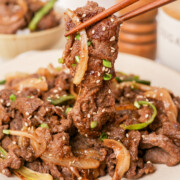


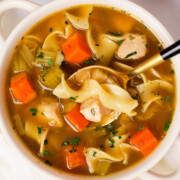



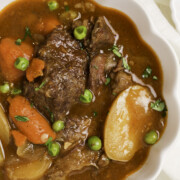
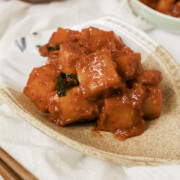
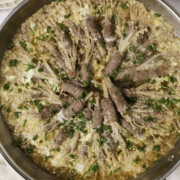

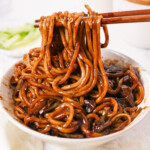




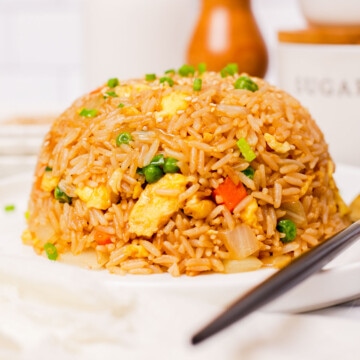
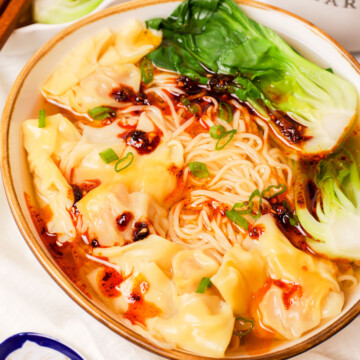
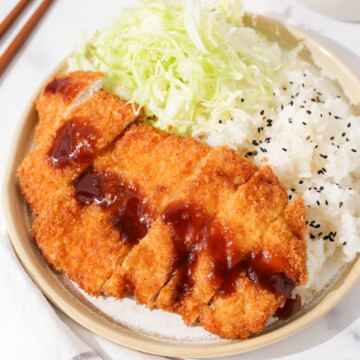
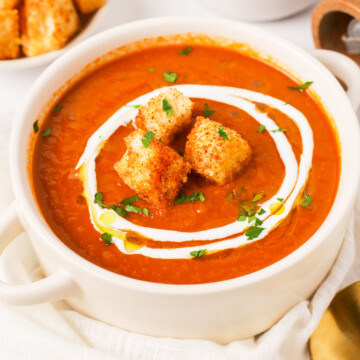
Comments
No Comments